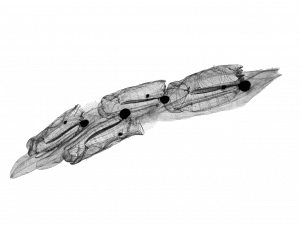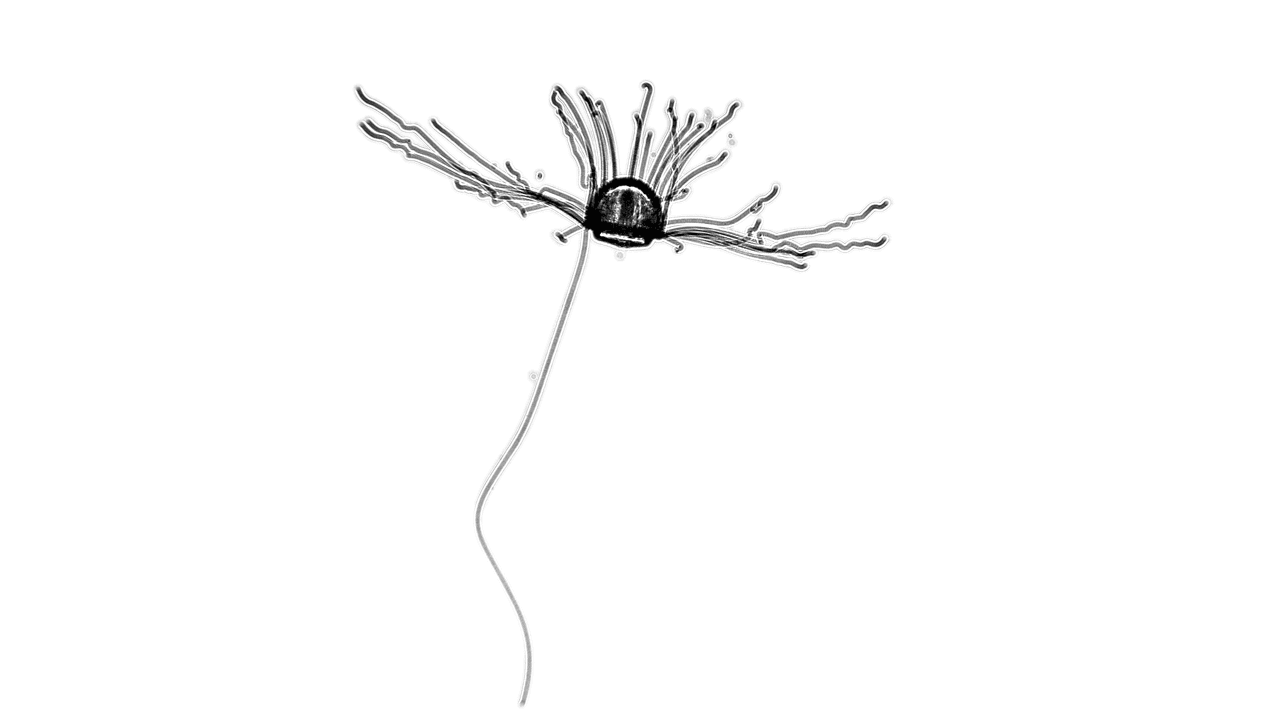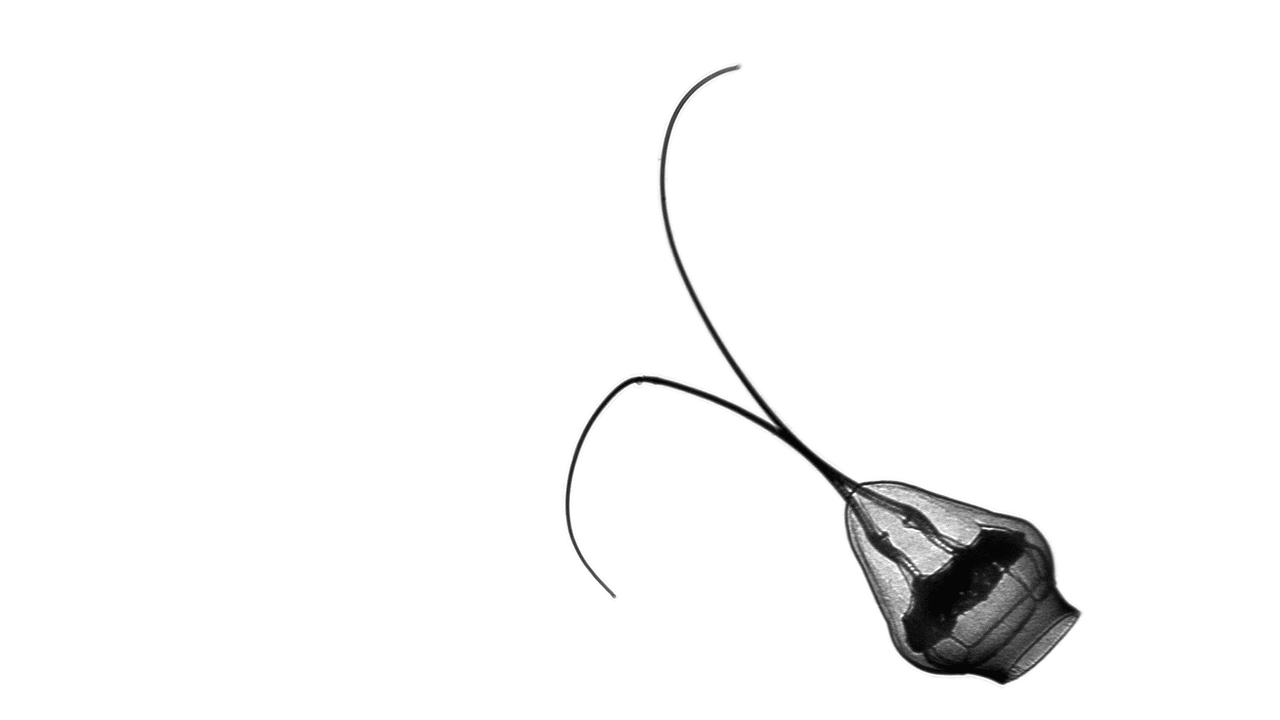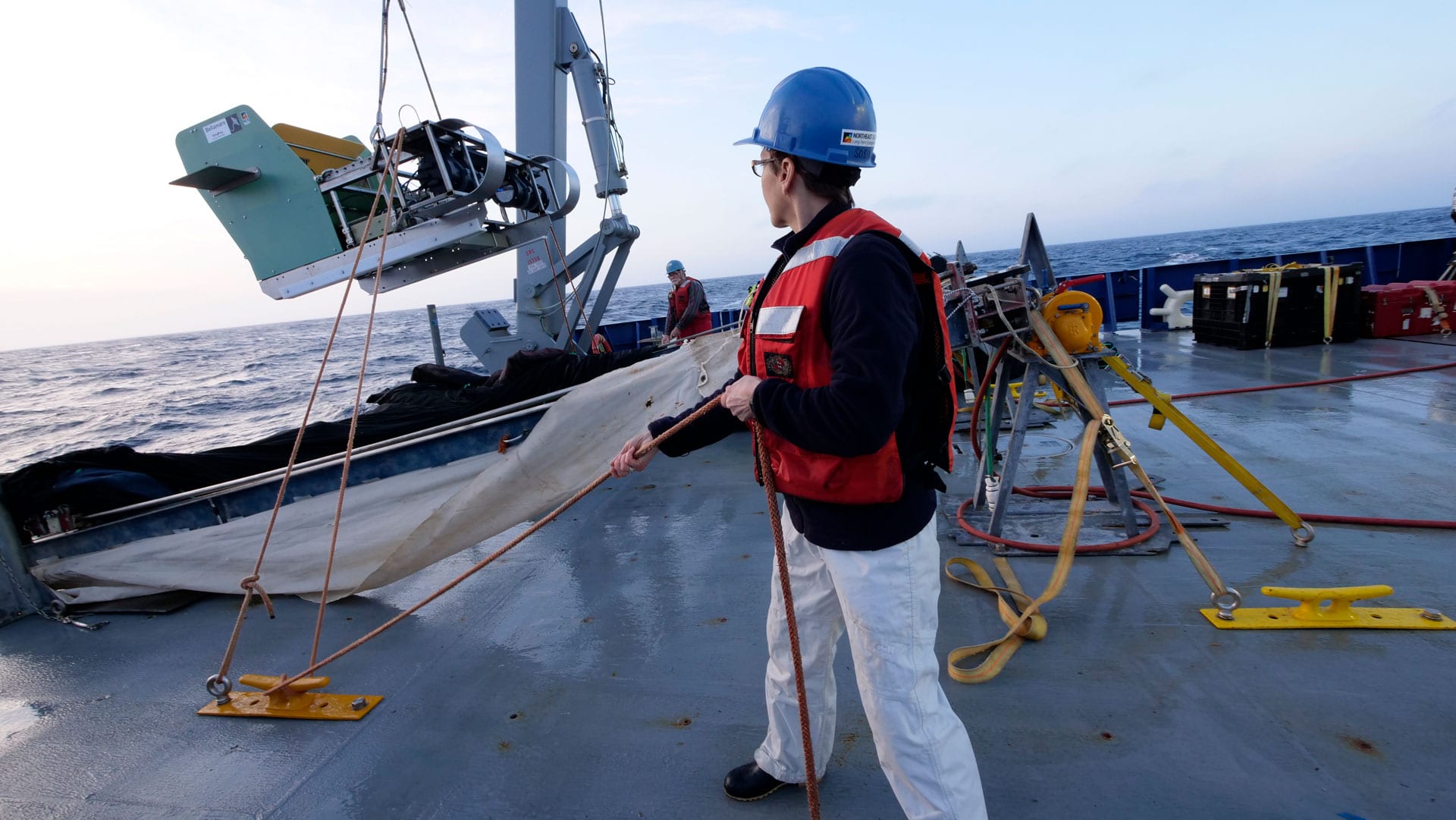Specialized camera system gives unprecedented view of ocean life
Heidi Sosik, Biology Department
Edited by Véronique LaCapra | August 20, 2020


Shadowgraph images collected by WHOI Biologist Heidi Sosik
Plankton are critical to ocean ecosystems and our planet. These mostly microscopic organisms—plant-like phytoplankton and tiny animals known as zooplankton—form the base of most ocean food webs. Phytoplankton also play a key role in producing oxygen and removing carbon dioxide from the atmosphere, helping to regulate Earth’s climate.
In spite of their importance, plankton communities in the ocean are poorly understood—in part because the ocean is vast, and plankton communities vary widely by location and over time. In the past, the only way scientists could study the distribution of plankton was by towing a net from a ship. Using this method, it is impossible to know the depth at which a particular animal was collected or to reliably generalize the results from sampling in one location to a broader geographic region. In addition, many species of plankton are gelatinous and fragile, making it difficult or impossible to collect them using a net without damaging them.
Today, new technologies are giving scientists an unparalleled look at ocean life. WHOI biologist Heidi Sosik leads the Northeast U.S. Shelf Long-Term Ecological Research (NES-LTER) project, which aims to understand and predict how plankton food webs are changing, and how those changes may impact fish and other marine life. The NES-LTER stretches more than 100 miles from Martha’s Vineyard to the edge of the continental shelf, and from the surface down hundreds of feet into the ocean twilight zone. Such a vast area would be impossible to sample comprehensively with conventional net tows, so Sosik is using a specialized underwater camera system to image plankton in situ, under the water.
The In-situ Ichthyoplankton Imaging System (ISIIS) is towed behind a ship on a small Stingray “sled.” The system’s shadowgraph optics can capture incredibly detailed images of zooplankton, jellies, and small fish, at the rate of 14 frames per second, while other sensors on the Stingray simultaneously measure depth, oxygen, salinity, temperature, and other water characteristics.
The images are spectacular, and scientifically, the results have been unprecedented. Using ISIIS, which Sosik purchased with the support of the Simons Foundation, she and her team have been able to collect millions of images from a swath of water spanning the entire continental shelf, producing one of the most comprehensive plankton datasets ever collected. Sosik is now working to apply artificial intelligence and machine learning to analyze this massive treasure trove of biological and environmental data. The findings are certain to revolutionize our understanding of plankton community dynamics, with implications for ocean food webs, fisheries, and global climate.
About the Simons Foundation
The Simons Foundation’s mission is to advance the frontiers of research in mathematics and the basic sciences. We sponsor a range of programs that aim to promote a deeper understanding of our world. For more information, go to www.simonsfoundation.org

The findings are certain to revolutionize our understanding of plankton community dynamics, with implications for ocean food webs, fisheries, and global climate

